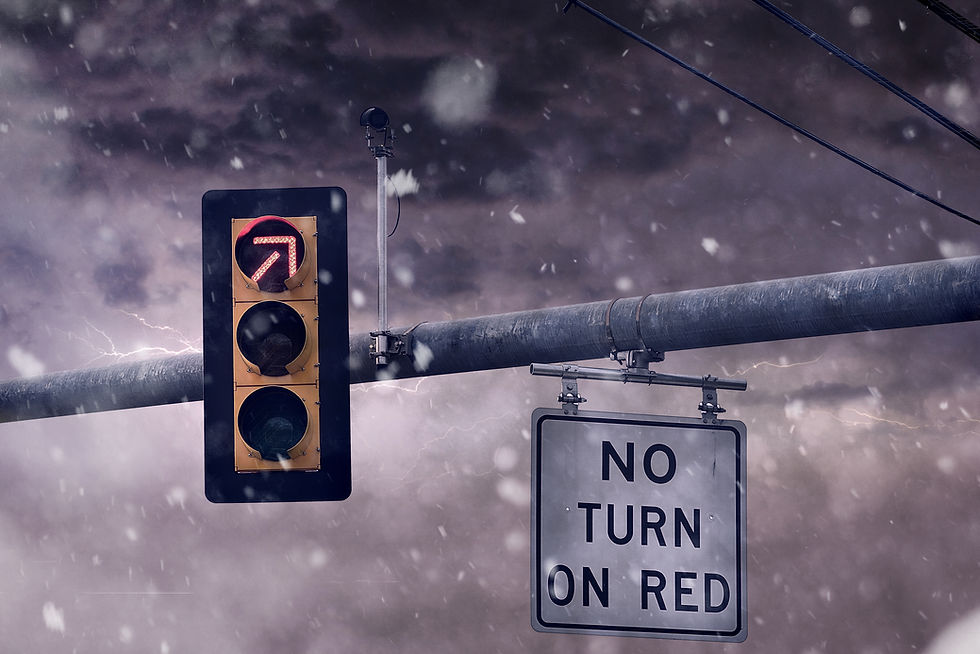Green, Yellow, Red Light Boundaries
- rshepard

- Mar 16, 2023
- 3 min read
Updated: Nov 10, 2023

From The Book of Boundaries: Set the Limits That will Set You Free by Melissa Urban, I bring you a concept that may help you change your perspective on boundaries.
Boundaries feel scary often because we are afraid that the boundary that we set will keep people away, or at least upset them severely and then we will be rejected and abandoned. What if instead we are able to communicate our desire to keep ourself safe without pushing people way? Let's just see.

Green Light Boundaries
Starting small, you have identified what keeps you safe and that there needs to be a boundary. Green light is assuming the best about the other person, that they may not realize they are invading your space. This can sound different in every context, however, think light-hearted. Maybe humor is appropriate, maybe a bit of "hey, not a big deal but,"
For example, lets say a friend of yours keeps asking for intimate details of your new relationship. Normally, you would find yourself oversharing the details even though you don't want to because it's your friend, of course I will share with her! Later, you find yourself having a vulnerability hangover, and feeling regrets of sharing to that extent. You recognize there needs to be a boundary, and maybe you can start with a green light boundary. You go on another date, inevitably your friend asks you over coffee, "what happened, where did you go, did you have fun, did you sleep together, do you want to be more committed?" You respond with "you know, I'm going to see where it goes, how has work been for you?" Not a big confrontation, she may not even realize that you haven't answered her questions, and she may be eager to share with you about work. Notice that there is not an offer of information as a peace offering, like "here is this other vulnerable thing about me, please don't be mad."
Yellow Light Boundaries

However, she may circle back and keep asking you. Now it is time to use a yellow light, stating with firm language your boundary. "ya know, I am just not comfortable sharing right now." Notice, there is not an explanation or giving a reason why you are setting the boundary.
Red Light Boundaries

This is the more rigid boundary that keeps us safe. Red light boundaries include a consequence, "This is my boundary, if you keep crossing, this will happen."
Going back to our example, your friend has not been respectful of green and yellow, so you try out red. "you know, I have already stated that I don't feel comfortable talking about this. I am not going to talk about my relationship, if you are not interested in talking about another topic I will need to go." Notice, the boundary is clear, and still kind. However, there is not an apology, there is not compensation during the consequence like "but maybe we could hang out later, or maybe I will tell you later." You do not owe your friend anything, the information is yours and you know what helps you to feel safe and feeling good.

The other positive about having this gradual progression of boundaries is having evidence to show that you are trying something softer first. This helps the person see that you are serious about it, and that the issue is with them, not you.
One of the most difficult things about setting any boundary is remembering that you are not responsible for their reaction. Likely, if this is the first time setting a boundary with this friend, she will feel pushed away, hurt, and get mad at you. However, that may not be the case, ideally she is a good friend and respects that you don't want to talk about it. She will not understand, and may want a reason, or just be confused. All of those emotions and reactions are her responsibility. If she asks "why?" you can say "I just need this right now," "I just need some time to process before talking," "I'd rather not share further," or "It's a sensitive topic."
Boundaries can be scary to set, but with practice there can be progress in your relationships including with yourself. I love how Melissa Urban gives specific examples of the language to use because it is much easier to practice something if the words are provided. Hopefully these examples are helpful and inspire you to practice more boundary setting in your life.




Comments